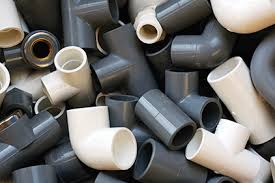
How to choose an Aran sweater
June 15, 2024
How to deter burglars from your home
June 24, 2024Drains are an essential part of every building, providing a way for water run-off, as well as used water, to be cleared away from the site. But how do you know what the best pipes are to lead water from your property to a drainage system? Here’s a guide to the types of pipes available, so you can make an informed decision.
PVC Pipes
These are the typical plastic drain pipes that you commonly see on houses. The benefits of using them are that they are cheap, easy to cut, and are well-stocked in most building outlets.
Cast Iron Pipes
This type of piping is known for its strength, and well as being long-lasting. According to Better Homes & Gardens, cast iron pipes can last 50-100 years. Being made from heavy metal, they are great for reducing the noise of water flowing. However, they may end up with corrosion, which can weaken them over time.
Copper Pipes
While not the most common of drainage pipes, copper works well because it is resistant to corrosion and easy to bend and cut to length.
Older Style Pipes
In the past, pipes made from materials such as galvanised iron and clay were often used as drain pipes. However, each of these is prone to weakness and breakages, and they are no longer recommended.
Whatever pipes you choose, it is essential to carry out regular maintenance. Make sure to regularly inspect pipes for signs of wear and tear, and if you suspect an issue with your drains, get it resolved promptly. Blockages can cause flooding and water damage, so professional help is recommended. Whether you need CCTV drain surveys Reading, Worcester or Aberdeen, a quick internet search will bring up services in your area. For more information on drain surveys, see https://www.drainpower.co.uk/drainage-services/cctv-drain-surveys/reading.
Pipes play an essential role in keeping your property safe from the effects of rainwater, as well as the effective removal of wastewater. Each type of pipe has its pros and cons, and the best fit for your home is down to your personal preferences and budget.


